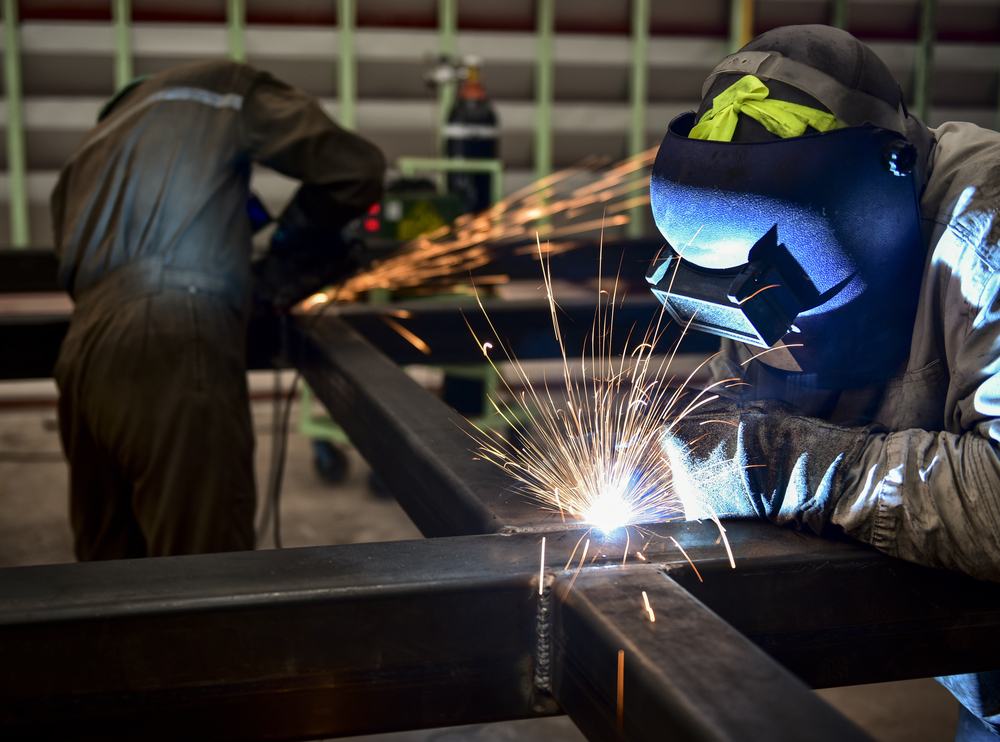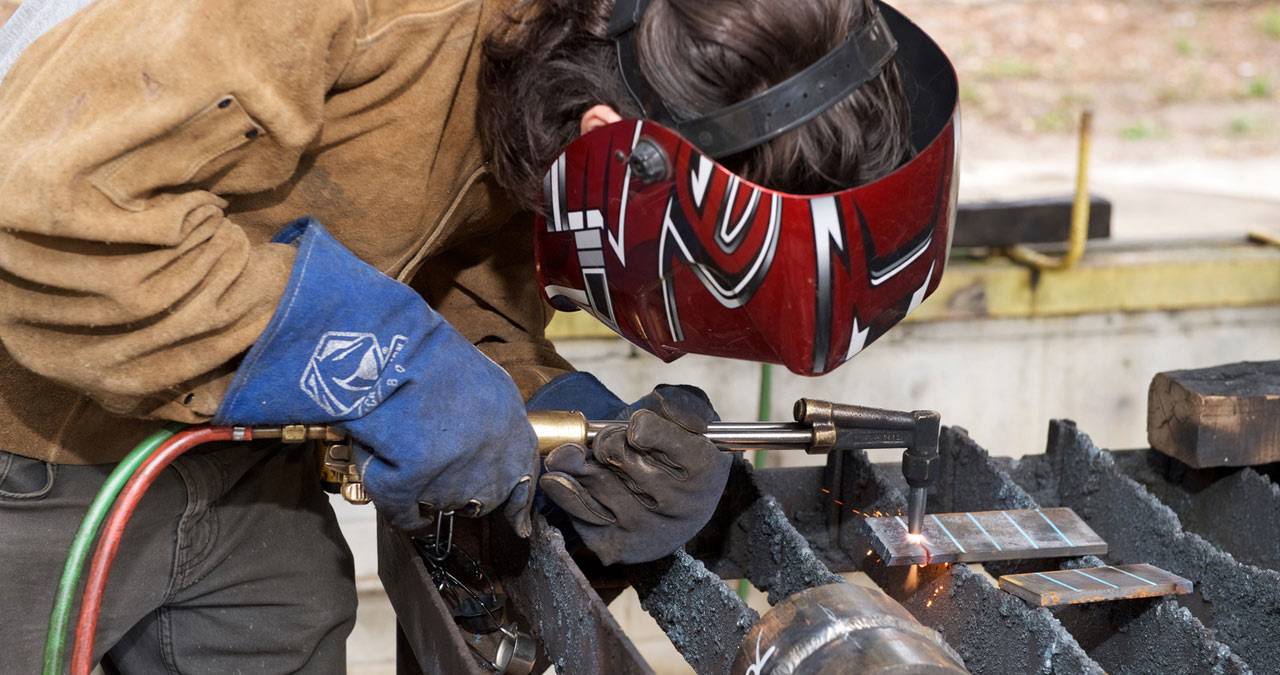Everything about Welding: Secret Insights Into Techniques and Ideal Practices for Success
Welding encompasses a range of techniques, each matched for specific materials and applications. Comprehending these approaches, such as GMAW, SMAW, and TIG, is crucial for accomplishing suitable outcomes. In addition, the right equipment and safety and security methods can not be ignored. As prep work and troubleshooting play important roles in the welding process, mastering these elements can significantly enhance the quality of the last item. What are the crucial elements that guarantee an effective weld?
Recognizing Different Welding Techniques
Welding methods incorporate a variety of approaches, each fit to certain applications and materials. Amongst one of the most usual strategies are Gas Steel Arc Welding (GMAW), Shielded Steel Arc Welding (SMAW), and Tungsten Inert Gas Welding (TIG) GMAW, likewise called MIG welding, is prominent for its speed and adaptability, making it optimal for slim products. SMAW, or stick welding, is preferred for its simplicity and efficiency in outdoor environments, specifically with thicker metals. TIG welding uses accuracy and control, making it suitable for elaborate work and non-ferrous metals (Montana Mobile Welding and Repair Belgrade Welding). Each strategy has its unique advantages and considerations, permitting welders to select the very best method based on the job's requirements, material kind, and desired end results. Comprehending these methods is important for effective welding
Essential Welding Tools and Tools
While various welding strategies require certain skills, the right devices and devices are just as necessary for achieving high quality outcomes. Necessary welding devices includes welding machines, which vary depending on the strategy-- such as MIG, TIG, or stick welding. Protective equipment, including headgears, aprons, and handwear covers, assurances safety and security and comfort during the process. Furthermore, clamps and fixtures help protect products in area, making sure accuracy in welds. Consumables like welding rods, wire, and shielding gas are likewise critical components that affect the top quality of the weld. Tools such as cutters and grinders help with surface prep work and post-weld ending up, adding to an expert result. Buying high-grade tools inevitably improves the efficiency and effectiveness of welding projects.
Safety Practices in Welding
Appropriate safety methods are essential in the welding sector to secure workers from possible dangers. Welders need to wear appropriate individual safety tools (PPE), including helmets with appropriate shading, gloves, and flame-resistant apparel. Adequate ventilation is crucial to minimize exposure to dangerous fumes and gases generated throughout the welding process. Additionally, employees must be trained in the proper handling of welding tools to avoid crashes. Fire precaution, such as maintaining flammable products away from the welding location and having fire extinguishers easily offered, are needed. Regular examinations of tools and offices can aid recognize prospective hazards prior to they result in crashes. By sticking to these safety and security methods, welders can produce a safer working setting and reduce risks connected with their trade.
Readying Products for Welding
Preparing materials for welding is an important action that considerably influences the high quality and stability of the last product (Fabrication). Appropriate prep work entails cleansing the surface areas to eliminate pollutants such as dirt, rust, and oil, which can compromise the weld. Methods such as grinding, fining sand, or using solvents are frequently used to attain a tidy surface area. In addition, guaranteeing that the materials fit together comfortably is important; spaces can lead to weak welds. It's additionally crucial to consider the placement and positioning of the parts, as this will impact the simplicity of welding and the last end result. Finally, selecting the ideal filler material and making sure compatibility with the base steels is crucial for attaining solid, long lasting welds
Tips for Achieving High-Quality Welds
Achieving high-quality welds needs attention to information and adherence to finest practices throughout the welding process. Proper joint preparation is necessary, making sure surfaces are clean and free from pollutants. Picking the suitable filler product and welding strategy based on the base metals is essential for optimal bonding. Maintaining consistent travel rate and angle while welding can advertise and prevent issues harmony. Additionally, managing heat input is essential; excessive warm can bring about warping and damaged joints. Frequently evaluating the welds throughout the process enables prompt changes if essential. Employing proper post-weld treatments, such as cleaning and tension alleviation, can enhance the toughness and stability of the weld, inevitably making certain an effective result.
Fixing Common Welding Issues
Welding frequently presents difficulties that can influence the high quality and integrity of the last product. Typical problems such as porosity, inconsistent weld beads, and getting too hot can develop, each needing particular troubleshooting strategies. Understanding these troubles is essential for welders to boost their skills and achieve ideal results.
Porosity Issues Clarified
Although porosity can frequently be ignored, it remains a vital issue in welding that can endanger the stability of a finished item. Porosity refers to the existence of tiny gas pockets within the weld bead, which can lead and weaken the joint to early failing. This problem generally emerges from impurities, wetness, or incorrect shielding gas coverage throughout the welding process. To mitigate porosity, welders ought to confirm that the base products are clean and completely dry, utilize proper protecting gases, and preserve consistent welding parameters. On a regular basis checking the equipment and setting can also aid identify prospective concerns prior to they manifest in the weld. Addressing porosity efficiently is vital for attaining solid, resilient welds that fulfill quality criteria.

Inconsistent Weld Beans
Irregular weld grains can significantly affect the quality and toughness of a completed item. Various factors contribute to this issue, consisting of inappropriate investigate this site traveling rate, incorrect amperage setups, and irregular electrode angles. When the welder moves also swiftly, a bead may show up slim and lack infiltration, while moving as well slowly can cause extreme buildup. Furthermore, making use of the incorrect amperage can lead to either undercutting or extreme spatter, both of which concession weld integrity. The welder's technique, such as inconsistent torch movement, can additionally bring about unequal grain look. To mitigate these issues, welders need to concentrate on preserving stable, regulated motions and making sure proper equipment setups to attain uniformity in their welds. Consistency is crucial to achieving reliable and strong welds.
Getting Too Hot and Bending Issues
Excessive warm throughout the welding procedure can bring about considerable overheating and warping problems, influencing the structural stability of the workpiece. These issues commonly manifest as distortion, which can compromise placement and fit-up, making further setting up challenging. Elements contributing to overheating consist of the option of welding specifications, such as voltage and travel rate, as well as the type of product being bonded. To reduce these concerns, welders need to keep regular traveling rate and appropriate warm input while monitoring the work surface temperature. Furthermore, preheating or post-weld heat treatment can aid reduce stress and anxieties triggered by quick cooling - Belgrade. Normal inspection and adherence to ideal practices are important in preventing overheating and making sure the long life and reliability of bonded frameworks
Frequently Asked Questions
What Are the Occupation Opportunities in the Welding Industry?
The welding market offers varied occupation opportunities, consisting of settings as welders, designers, teachers, and assessors. Specialists can operate in production, building and construction, aerospace, and vehicle industries, gaining from strong demand and affordable wages in different have a peek here roles.
Exactly How Can I Improve My Welding Rate Without Compromising High Quality?
To improve welding speed without sacrificing top quality, one should practice reliable strategies, keep tools, maximize settings, and boost hand-eye sychronisation. Normal training and seeking feedback can likewise greatly add to attaining much faster, top notch welds.
What Certifications Are Offered for Welders?
Many certifications exist for welders, consisting of those from the American Welding Society (AWS), the National Facility for Construction Education and Study (NCCER), and different industry-specific organizations. These credentials improve employability and demonstrate ability effectiveness.
How Does Welding Impact the Qualities of Metals?
Welding influences the residential or commercial properties of metals by changing their microstructure, which can result in changes in ductility, plasma welding hardness, and strength. Heat input and air conditioning rates during the process substantially affect these material characteristics.
Can I Weld Dissimilar Metals Together?
